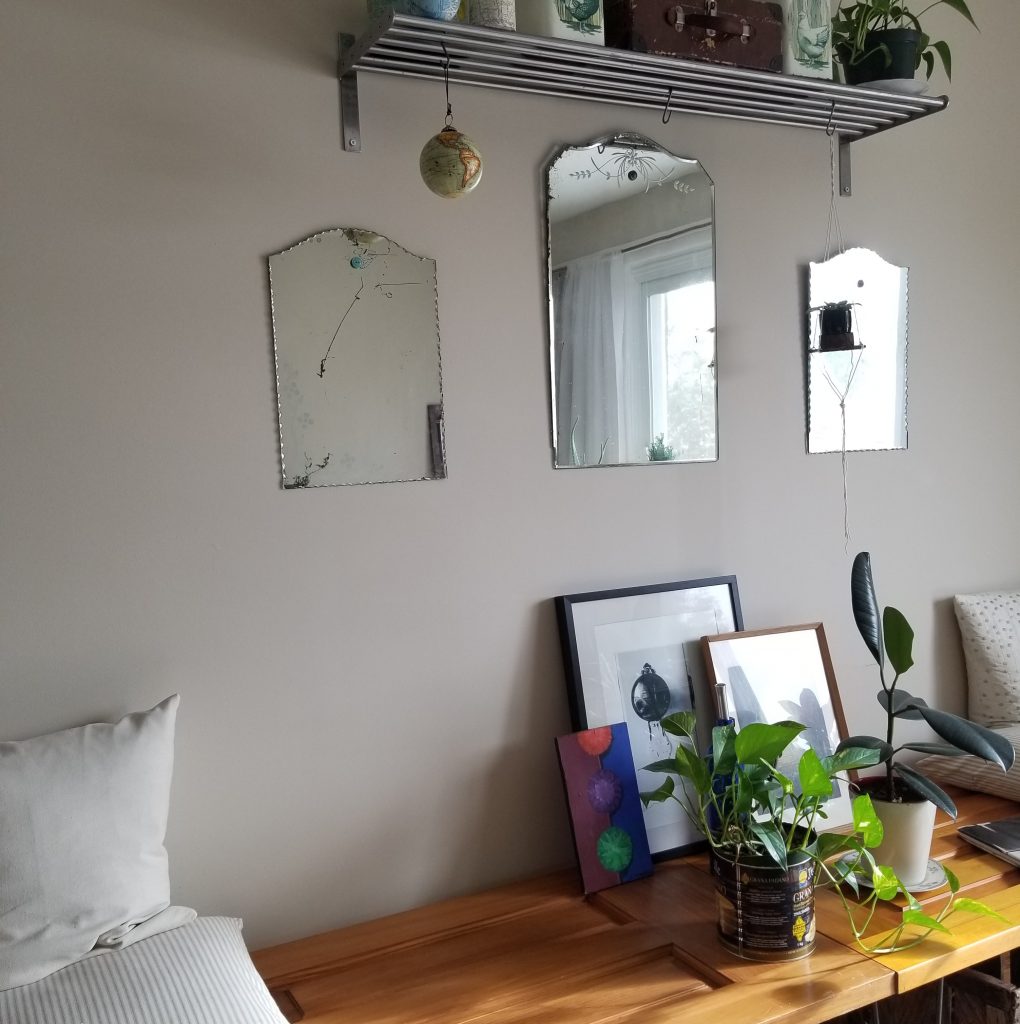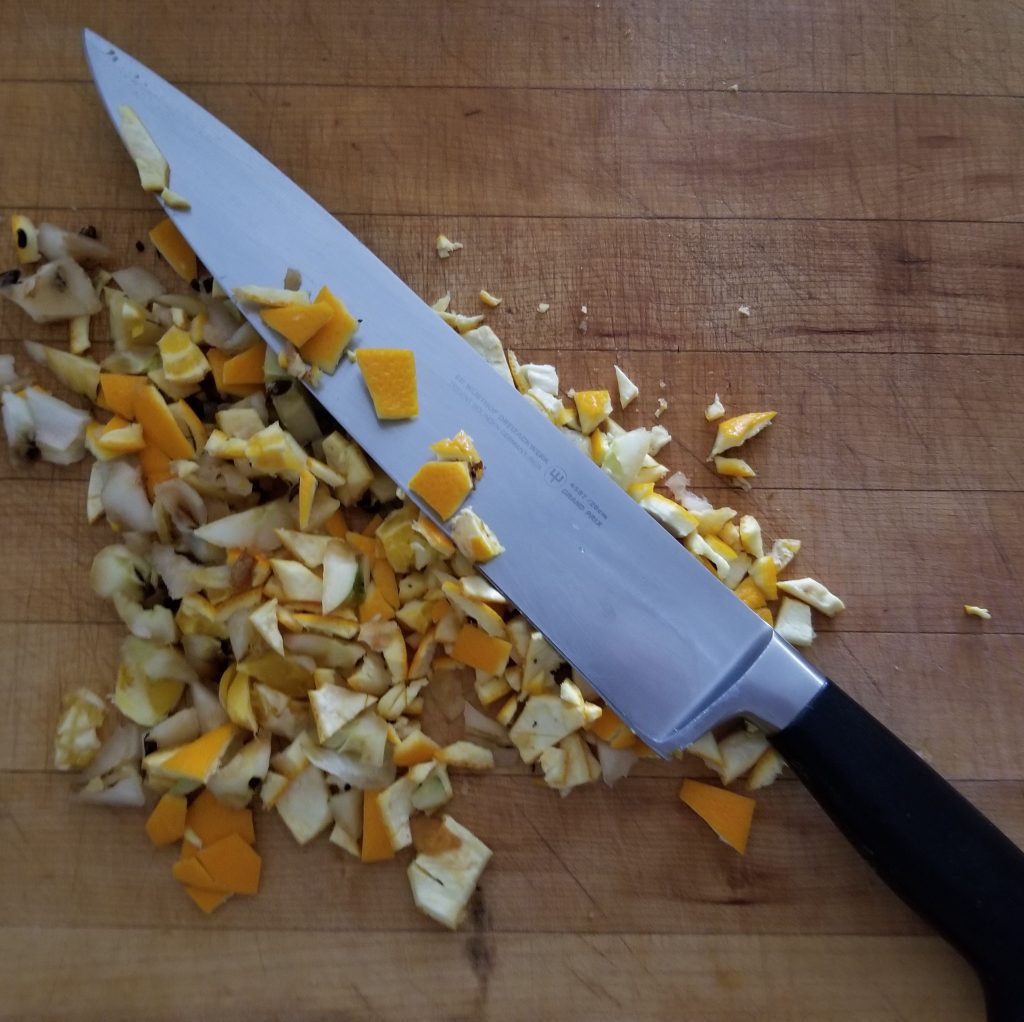
Our apartment smells like mustard. I have no idea why.
We didn’t notice it the day we took the tour, but when we picked up the keys and the place was all ours, as we walked through taking measurements and marvelling at the huge number of closets, I asked Alan, “Does it smell like mustard to you?”
“Yeah,” he said. “And not the good kind.”
Nope. It smells like the brilliant yellow ball-park mustard that we never actually buy.
“What do you suppose is causing it?” I asked.
“No idea. But once we’re in and all our stuff is here, it’ll fade.”
It wasn’t an unpleasant smell, not like the stale cigar and old pipe smell that drifted up from the basement in our old place. It’s just a bit odd.
Once we’d moved all our stuff in and started cooking yummy things, we’d come in from running errands and take a sniff.
“Still smells like mustard….”
“Yep.”
It dissipated over the summer with several months of having all the windows open, but once the cooler weather hit and we closed everything up, the smell was back. It might always be here.
We’re getting used to it. And the cravings for hot pretzels that arise every time we walk in the door.

Since we sold the house and moved here, I’ve been frustrated that we couldn’t compost. I hate to see the garbage going out from here, knowing that if we were in a house we’d be composting. But I thought the only way to compost in an apartment was with worms and I didn’t really like the thought of that. What if I did it wrong and they all died? Where would we even put a vermicomposter anyway?
But I finally did a bit of research and found out that you don’t actually need worms to compost indoors. And isn’t there a lesson in that part alone? Do the research to verify or disprove your assumptions. Because if I had done that when we got here, I’d have a year of indoor composting behind me instead of a mountain of bags of garbage.
You need a container and a bit of dirt. You need to be careful not to let the mixture get too wet. And it works better if you cut everything up really small before you put it in the composter.
So we’re experimenting with an old stockpot with an ill-fitting lid (for the air circulation). The potting soil from a dead plant went in, along with a bunch of used coffee grounds. These help to keep it from getting too damp and help to quell any odours that may arise.
It’s a new routine, so sometimes we forget. And all the extra chopping is different from the way we handled our outdoor compost. Though even when you’re tossing your scraps in an outdoor bin, it will break down faster if you cut everything up really small.

We started the experiment just before Christmas and did some heavy-duty cooking over the holidays. The pot is getting full. When it is, we’ll give it a final stir, put in a layer of spent coffee grounds and let it cook away while we start on a second pot. When the second one fills up, we’ll sieve the contents of the first and start again with it.
And if there are points in the process where some of our food scraps end up in the trash, that’s still better than having all of our food scraps ending up there. But if it works, that’ll be really cool. And even the people I know who own houses and compost in the summer will be able to try this in the winter when getting out to the composter seems like more trouble than it’s worth.
And if it doesn’t work, well, we’ve only invested a defunct stock pot and a bit of our time in this little experiment. It’s not like we’ll have a bunch of homeless worms to rehouse. And thank goodness for that!
I noticed the other day that things were a little wetter than I’d like them to be, so I gave it a good stir and pushed the lid back to let it dry out a bit. Then we went out to run errands.
When we came home, I gave a surreptitious sniff, afraid that maybe I’d smell the compost. But nope. The place still smells like mustard! I was so relieved.
We’re lucky to have a balcony, so if at any point things start to go wrong, I can easily carry the pot of compost out and leave it in the sunshine until it’s ready to behave, with, hopefully, less panic than has accompanied various malfunctioning toaster ovens and their flaming contents. I think in any experiment it’s important to have an emergency plan in place.
We went looking for another stock pot at the thrift stores the other day, but didn’t find one. Alan reports that they rarely come up (which explains why he fights me for the ones that do). I did have the thought of buying a cheap new one, but we had a bit of time so thankfully, I didn’t act on it. Because I remembered that I have one without a lid that I’ve been using to store some of my knitting stash. The yarn can easily be rehoused and I’ll make a fabric cover for it. That’ll increase the air circulation and all will be well.
This is really cool and I’m looking forward to using our lovely compost to top-dress and repot all my houseplants.
So let me know. Are you trying anything new these days? Anything you thought couldn’t be done?





Pingback: Spring Things |